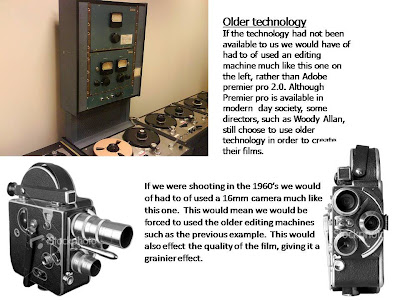The second element I feel we improved on was looking out for mistakes in our footage during and after shooting. For example, in our first piece, while filming I caught myself and the camera on footage in a reflection, but this time round we took more time not to get reflections in car windows or shadows of ourselves in the footage.
Lastly, I feel that we were a lot more adventures with what we did with the camera. In our first short film we had most of our shots from on a tripod, where as we tried to vary most of our shots in our main task. This helped to give the film a more interesting look to it and helped audience to keep interested, as at the end of the day our main task was two minutes of people running. I feel that the one time we did try something ne with the camera in the preliminary task it worked out well, with the high angle CCTV shots, and this, as well as watching other films, gave us more conference to do more interesting things with the camera such as a tracking shot.









